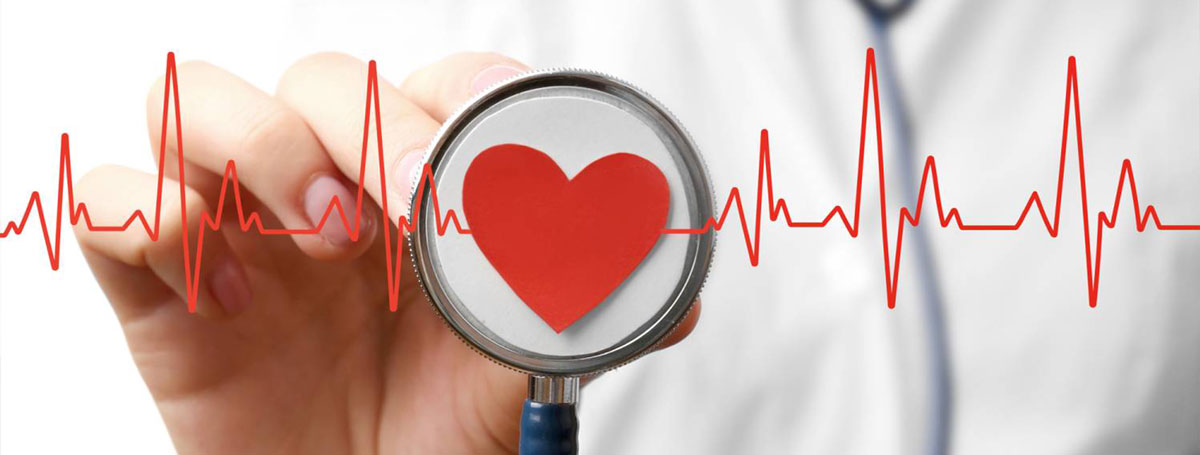Cardiology

Cardiology Unit at Hayat Clinic is engaged in diagnosis and treatment of heart and vascular diseases, as well as the assessment of the need for acute cardiac care. We also pay close attention to early diagnosis and prevention of cardiovascular pathology. Highly qualified specialists diagnose and treat a wide range of heart diseases (including chronic and congenital heart diseases). We treat:
- aortic aneurysm;
- atherosclerosis;
- bradycardia;
- intracardiac thrombus;
- congenital and acquired heart defects;
- hypertensive disease and secondary hypertension;
- myocardial infarction at different stages of its development and course (diagnosis only);
- infectious endocarditis and other endocardial diseases;
- ischemic heart disease, stable angina and unstable angina (differential diagnosis of ischemic heart disease);
- cardiomyopathy;
- myocarditis;
- irregular heartbeat (arrhythmias) and cardial conduction (heart block);
- cardiac tumors (diagnosis);
- pericarditis, pericardial effusion;
- prolapsed heart valves;
- heart failure;
- thromboembolism of the branches of the pulmonary artery (diagnosis), etc.
We are also engaged in the diagnosis of secondary pathology of the cardiovascular system resulting from the diseases of other organs and systems:
- diabetic heart;
- thyrocardiac disease;
- heart affected by hypothyroidism;
- hypertensive heart;
- metabolic syndrome;
- vegetative-vascular dystonia;
- cardialgia, cardialgia syndrome;
- irregular heartbeat of various origin;
- heart during pregnancy, etc.
The cardiologists of Hayat Clinic use all the latest methods of diagnosing heart diseases, including instrumental and laboratory diagnosis of cardiovascular pathology. Here you can get information about all the biochemical parameters of your blood within 24 hours. We use the following methods of functional diagnosis of heart diseases:
Electrocardiography (ECG, a painless study tracking electrical impulses, the frequency and rhythm of heartbeat, and other parameters of the heart).
Echocardiography, echocardioscopy (heart ultrasound, determination of various parameters of the cardiac function by targeted exposure to sound waves).
Daily monitoring of blood pressure (to measure the arterial hypertension, as well as to determine the efficiency of therapy).
Daily Holter electrocardiogram monitoring (analysis of cardiac arrhythmia, heart rate variability; detection of ischemic episodes throughout the day, determination of silent or painless myocardial ischemia). This[R1] monitoring is carried out using a 12-channel Holter (the most effective one).
Bicycle ergometry involves the tests with graduated exercise using an ergometric bicycle (to detect coronary heart disease, to determine the individual load tolerance in patients with coronary heart disease, to identify the class of angina pectoris, to determine the load tolerance of people without cardiovascular diseases).
Tredmill/Stress test is a test with graduated exercise used to assess the functional state of the cardiovascular system. The method allows to detect the cardiac arrhythmias, conduct differential diagnosis of arrhythmias, assess the cause of chest pains and pathological changes in the blood pressure during exercis, as well as to assess the overall body response to physiological age-related exercise load.
Doppler echocardiography (Doppler echoCG) - allows to detect the blood circulatory disturbance, evaluate the cardiac hemodynamic. This method is critical in the differentiation of heart defects and other cardiovascular diseases.
Cardiac CT allows to get answers to the most complex diagnostic tasks quickly and accurately, including a morphological conclusion about the state of the heart muscle, heart cavity, and heart valves. The first priority in carrying out this procedure is an accurate conclusion about the state of the heart muscle, both from a qualitative and quantitative point of view. Thus, even at the initial stage it is possible to detect the narrowing in the coronary arteries or presence of anomalies.
Cardiac MRI also includes a morphological conclusion about the state of the heart muscle, heart cavity, and heart valves. An accurate quantitative and qualitative conclusion about the work of such functional parameters as the general heart pump function and the regional wall motion is important as well.





